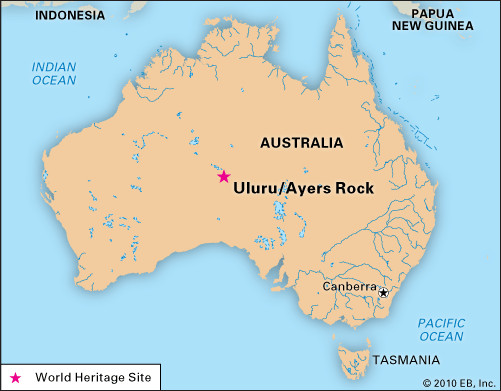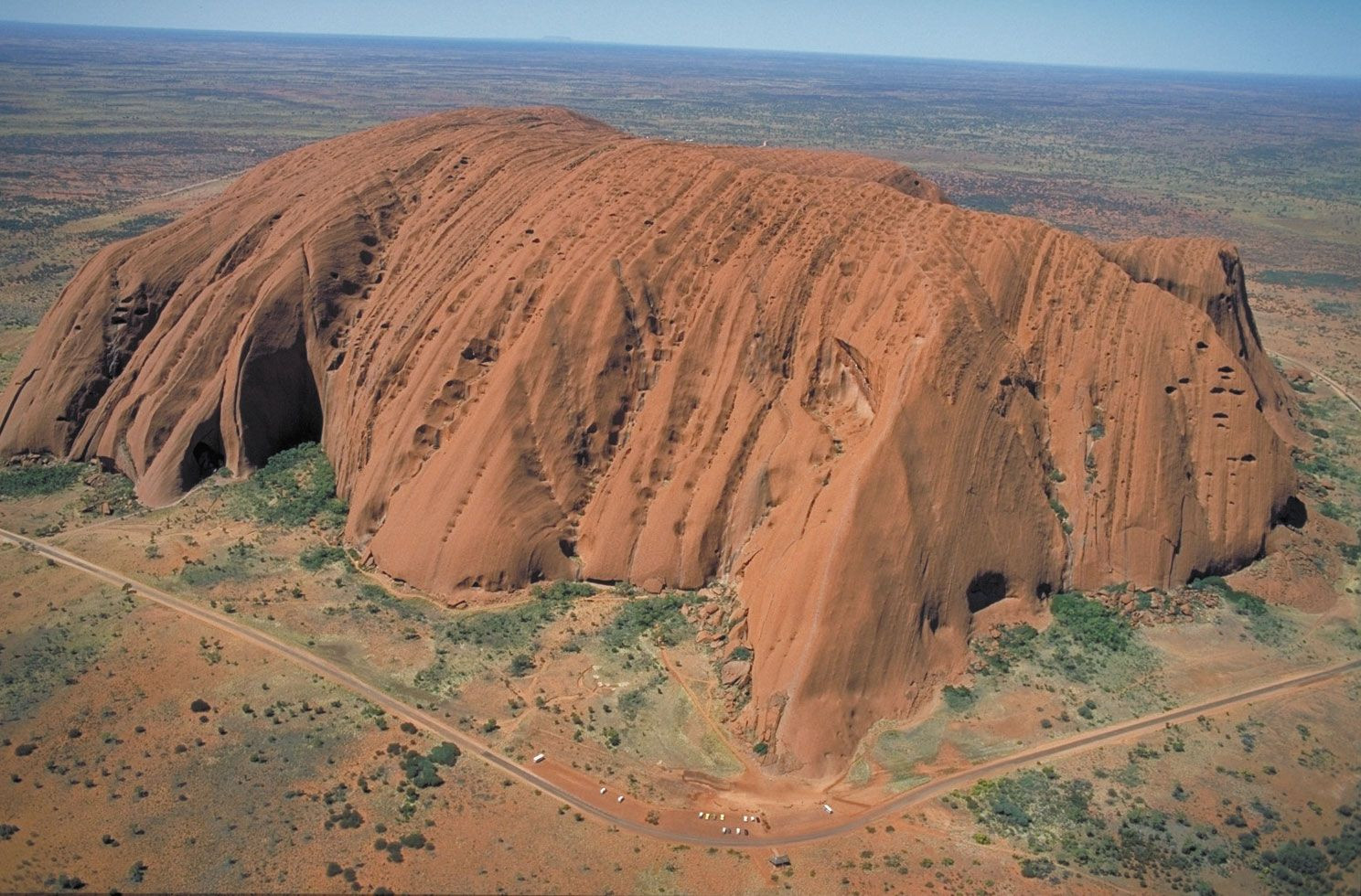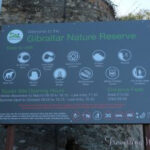Ayers Rock, also known as Uluru, is a majestic monolith and a significant landmark. Rockscapes.net delves into the exact location of this natural wonder, its geological composition, and its cultural significance to give you comprehensive insights. Discover the allure of Uluru and how you can incorporate elements of its grandeur into your own landscape designs.
1. What Continent Is Ayers Rock Located In?
Ayers Rock, or Uluru, is located on the continent of Australia. More specifically, it resides in the heart of the Australian Outback, making it a prominent feature of the country’s natural landscape.
Australia’s diverse landscape features unique rock formations, many inspiring landscape designs. Uluru’s iconic presence highlights the geological wonders that can influence aesthetic choices in rock arrangement and outdoor design.
2. Where in Australia Is Ayers Rock Specifically Located?
Uluru is specifically located in the southwestern part of the Northern Territory, Australia. It is situated within the Uluru-Kata Tjuta National Park, a UNESCO World Heritage site, which underscores its cultural and natural significance.
2.1. Central Location
Its central Australian location makes it a focal point of the continent. The surrounding arid landscape enhances its visual impact.
2.2. Uluru-Kata Tjuta National Park
Being part of this national park ensures its preservation and protection, contributing to its appeal for both tourists and researchers.
 Ayers Rock Uluru-Kata Tjuta National Park Australia Northern Territory
Ayers Rock Uluru-Kata Tjuta National Park Australia Northern Territory
Uluru-Kata Tjuta National Park in Australia’s Northern Territory, showcasing the region where Ayers Rock is located.
3. What Are the Coordinates of Ayers Rock?
The geographic coordinates of Uluru are approximately 25.3447° S latitude and 131.0367° E longitude. These coordinates place it in the southern part of the Northern Territory, within the Australian Outback.
3.1. Geographic Significance
These coordinates help in accurately locating the monolith for travel, research, and mapping purposes.
3.2. Outback Setting
The remote location contributes to the rock’s mystique and appeal, drawing visitors seeking to experience the unique Australian desert landscape.
4. How Far Is Ayers Rock From Major Australian Cities?
Ayers Rock is quite remote, being a considerable distance from major Australian cities:
- Alice Springs: Approximately 280 miles (450 km) northeast.
- Adelaide: Approximately 980 miles (1,575 km) south.
- Darwin: Approximately 1,100 miles (1,770 km) north.
- Sydney: Approximately 1,750 miles (2,816 km) east.
- Melbourne: Approximately 1,600 miles (2,575 km) southeast.
- Perth: Approximately 1,300 miles (2,092 km) west.
- Brisbane: Approximately 1,850 miles (2,977 km) east.
4.1. Proximity to Alice Springs
Alice Springs serves as the primary gateway for tourists visiting Uluru, offering connecting flights and road access.
4.2. Outback Journey
The distances from other major cities highlight the isolated nature of Uluru, making a trip to the site a true outback adventure.
5. What Is the Closest Town to Ayers Rock?
The closest town to Ayers Rock is Yulara, also known as Ayers Rock Resort. It is located just north of the Uluru-Kata Tjuta National Park boundary and provides accommodations, dining, and other services for tourists.
5.1. Yulara’s Role
Yulara serves as the main hub for tourists visiting Uluru, offering essential amenities and facilities.
5.2. Tourist Infrastructure
The presence of the resort ensures that visitors can comfortably explore the natural and cultural wonders of the area.
6. What Geological Features Surround Ayers Rock?
Ayers Rock is surrounded by a relatively flat, arid landscape characterized by:
- Sand dunes: Extensive sand dunes stretch across the plains.
- Spinifex grasslands: Hardy spinifex grasses cover much of the ground.
- Desert vegetation: Sparse desert vegetation adapted to the harsh climate.
- Kata Tjuta: Also known as The Olgas, a group of large, domed rock formations located about 20 miles (32 km) west-northwest of Uluru.
6.1. Sand Dunes and Grasslands
These features define the classic Australian Outback scenery, complementing the grandeur of Uluru.
6.2. Kata Tjuta (The Olgas)
The presence of Kata Tjuta adds another significant geological attraction to the region.
7. What Type of Rock Is Ayers Rock Made Of?
Ayers Rock is primarily composed of arkosic sandstone. This type of sandstone is characterized by a high proportion of feldspar, which contributes to its unique color and texture.
7.1. Arkosic Sandstone
The composition of arkosic sandstone influences the rock’s appearance, particularly its color variations under different lighting conditions.
7.2. Color Transformation
The rock’s ability to change color throughout the day, especially during sunrise and sunset, enhances its visual appeal and iconic status.
8. How Big Is Ayers Rock?
Ayers Rock is an enormous monolith with the following dimensions:
- Height: Rises 1,142 feet (348 meters) above the surrounding plain and 2,831 feet (863 meters) above sea level.
- Length: 2.2 miles (3.6 km).
- Width: 1.5 miles (2.4 km).
- Circumference: 5.8 miles (9.4 km).
8.1. Impressive Scale
These dimensions underscore its status as one of the largest monoliths in the world.
8.2. Monolithic Grandeur
Its size and presence dominate the surrounding landscape, making it a remarkable geological feature.
9. What Is the Climate Like Around Ayers Rock?
The climate around Ayers Rock is hot and arid, typical of central Australia:
- Summers (December-February): Very hot, with daytime temperatures often exceeding 105°F (40°C).
- Winters (June-August): Mild, with daytime temperatures around 68°F (20°C), but nighttime temperatures can drop below freezing.
- Rainfall: Highly variable, averaging about 12 inches (300 mm) annually, mostly falling between January and March.
- Diurnal Temperature Variation: Significant temperature differences between day and night.
9.1. Harsh Conditions
The extreme temperatures and low rainfall create a challenging environment for flora and fauna.
9.2. Seasonal Contrasts
The contrast between summer and winter temperatures highlights the variability of the desert climate.
10. What Flora and Fauna Can Be Found Near Ayers Rock?
Despite the harsh climate, the area around Ayers Rock supports a variety of plant and animal life:
- Flora: Mulga trees, desert oaks, desert poplars, eucalyptus (especially centralian bloodwoods), shrubs (such as Grevillea species), and wildflowers.
- Fauna: Red kangaroos, rodents, small marsupials, rufus hare wallabies, lizards (geckos and skinks), snakes (including death adders), the moloch (thorny devil), falcons, buzzards, budgerigars, and honeyeaters.
10.1. Adapted Species
The plants and animals in this region are well-adapted to survive in arid conditions.
10.2. Biodiversity
The presence of diverse species underscores the resilience of life in the Australian Outback.
 Woma python
Woma python
A Woma python in the desert near Uluru/Ayers Rock, showcasing the wildlife that thrives in the area.
11. What Cultural Significance Does Ayers Rock Hold?
Ayers Rock, or Uluru, holds immense cultural significance for the local Aboriginal peoples, particularly the Anangu:
- Sacred Site: Uluru is considered a sacred site with deep spiritual and cultural meanings.
- Dreamtime Stories: The rock is central to many Dreamtime stories, which explain the creation and history of the land and its people.
- Traditional Practices: The caves and markings around the base of the rock hold significant ceremonial and artistic importance.
11.1. Anangu Heritage
The Anangu people are the traditional custodians of Uluru, and their connection to the site dates back tens of thousands of years.
11.2. Respect for Culture
Understanding and respecting the cultural significance of Uluru is essential for visitors, promoting responsible tourism.
12. What Activities Can Visitors Do at Ayers Rock?
Visitors to Ayers Rock can engage in various activities:
- Hiking: Walking around the base of the rock provides an up-close experience of its size and geological features.
- Cultural Tours: Guided tours led by Aboriginal guides offer insights into the cultural significance of Uluru.
- Sunset and Sunrise Viewing: Observing the changing colors of the rock at sunrise and sunset is a popular activity.
- Visiting the Cultural Centre: The cultural centre provides exhibits and information about Aboriginal culture and history.
- Scenic Flights: Aerial tours offer a unique perspective of Uluru and the surrounding landscape.
12.1. Cultural Immersion
Engaging in cultural tours and visiting the cultural centre enhances visitors’ understanding of the Aboriginal heritage.
12.2. Natural Spectacle
Witnessing the color changes at sunrise and sunset provides unforgettable visual experiences.
13. What Is the History of the Name “Ayers Rock”?
The name “Ayers Rock” was given to the monolith in 1873 by surveyor William Gosse, who named it in honor of Sir Henry Ayers, the then-Chief Secretary of South Australia.
13.1. Colonial Naming
The naming reflects the colonial history of Australia, with European explorers and officials assigning names to landmarks.
13.2. Dual Naming
Today, the site is officially known as Uluru/Ayers Rock, recognizing both the traditional Aboriginal name and the colonial name.
14. When Was the Uluru-Kata Tjuta National Park Established?
The Uluru-Kata Tjuta National Park was initially established in 1958 as Ayers Rock–Mount Olga National Park. It was later renamed in 1993 to reflect the Aboriginal name and the inclusion of Kata Tjuta (The Olgas).
14.1. Conservation Efforts
The establishment of the national park marked a significant step in preserving the natural and cultural heritage of the region.
14.2. Recognition of Aboriginal Heritage
The renaming acknowledged the importance of Aboriginal culture and the traditional names of the landmarks.
15. What Conservation Efforts Are in Place at Ayers Rock?
Several conservation efforts are in place to protect Uluru and its surrounding environment:
- Park Management: The Uluru-Kata Tjuta National Park is managed jointly by Parks Australia and the Anangu traditional owners.
- Environmental Monitoring: Regular monitoring of the environment helps track changes and address potential threats.
- Sustainable Tourism Practices: Efforts are made to promote sustainable tourism, minimizing the impact of visitors on the environment.
- Cultural Preservation: Protecting and promoting the cultural heritage of the Anangu people is a key focus.
15.1. Joint Management
The collaboration between Parks Australia and the Anangu traditional owners ensures that conservation efforts respect both the natural and cultural values of the site.
15.2. Sustainable Practices
Encouraging responsible tourism helps preserve the environment for future generations.
 Uluru Ayers Rock Northern Territory Australia
Uluru Ayers Rock Northern Territory Australia
The northwestern face of Uluru/Ayers Rock in Australia’s Northern Territory, showcasing its unique texture and formations.
16. How Has Tourism Affected Ayers Rock?
Tourism has had both positive and negative effects on Ayers Rock:
- Economic Benefits: Tourism generates significant revenue, supporting local communities and conservation efforts.
- Environmental Impacts: Increased visitation can lead to erosion, waste generation, and disturbance of wildlife.
- Cultural Sensitivity: Balancing tourism with respect for the cultural values of the Anangu people is an ongoing challenge.
16.1. Economic Opportunities
Tourism provides employment and economic opportunities for local communities.
16.2. Sustainable Balance
Managing tourism to minimize environmental and cultural impacts is crucial for the long-term preservation of Uluru.
17. Are There Restrictions on Climbing Ayers Rock?
Yes, climbing Ayers Rock was officially banned on October 26, 2019. This decision was made to respect the cultural wishes of the Anangu people, who consider the climb a desecration of a sacred site.
17.1. Cultural Respect
The climbing ban reflects a growing recognition of the importance of respecting Indigenous cultures and traditions.
17.2. Alternative Activities
Visitors are encouraged to explore other activities, such as hiking around the base of the rock, cultural tours, and scenic flights.
18. What Is the Significance of the Color Changes in Ayers Rock?
The color changes in Ayers Rock, particularly at sunrise and sunset, are due to the way sunlight interacts with the arkosic sandstone. The iron content in the rock reflects different colors depending on the angle and intensity of the light.
18.1. Optical Phenomenon
The changing colors create a stunning visual spectacle, making sunrise and sunset prime times for viewing the rock.
18.2. Symbolic Interpretation
For the Anangu people, the color changes may hold deeper symbolic meanings related to their Dreamtime stories and cultural beliefs.
19. How Can I Plan a Visit to Ayers Rock?
Planning a visit to Ayers Rock involves several steps:
- Transportation: Fly to Alice Springs and then take a connecting flight or drive to Yulara.
- Accommodation: Book accommodations in Yulara well in advance.
- Activities: Plan your activities, including cultural tours, hikes, and scenic flights.
- Permits and Passes: Purchase necessary park permits and passes.
- Respectful Practices: Familiarize yourself with and respect the cultural guidelines of the Anangu people.
19.1. Advance Booking
Booking accommodations and tours in advance is essential, especially during peak tourist season.
19.2. Cultural Awareness
Being mindful of the cultural significance of Uluru enhances the visitor experience and promotes responsible tourism.
20. How Does Ayers Rock Inspire Landscape Design?
Ayers Rock inspires landscape design in several ways, particularly for those looking to capture the essence of the Australian Outback:
- Color Palette: Incorporating earthy tones and colors that mimic the rock’s changing hues can create a stunning visual impact.
- Natural Materials: Using natural materials such as sandstone, gravel, and native plants can evoke the rugged beauty of the Outback.
- Minimalist Approach: Adopting a minimalist approach with sparse vegetation and open spaces can reflect the vastness of the desert landscape.
- Rock Features: Incorporating large rock features can serve as focal points, reminiscent of Uluru itself.
- Drought-Tolerant Plants: Selecting drought-tolerant plants such as spinifex and native grasses can create a sustainable and authentic landscape.
20.1. Earthy Color Schemes
Using colors that reflect the natural environment can create a harmonious and visually appealing landscape.
20.2. Sustainable Landscaping
Choosing native and drought-tolerant plants promotes sustainability and reduces the need for extensive irrigation.
Discover how the grandeur of Uluru can inspire your own rockscapes.net.
5 Search Intent of the Keyword “Where Is Ayers Rock Located”
Understanding the search intent behind the query “where is Ayers Rock located” helps in tailoring content to meet user needs effectively. Here are five key search intents:
- Geographic Location: Users want to know the exact geographic location of Ayers Rock, including its continent, country, and specific region.
- Proximity to Cities: People are interested in understanding how far Ayers Rock is from major cities for travel planning purposes.
- Nearest Towns and Accommodation: Searchers want to find out the closest towns to Ayers Rock for accommodation and services.
- Geological Context: Users seek information about the geological features surrounding Ayers Rock, such as deserts, national parks, and other rock formations.
- Travel Planning: People researching want detailed information about how to get to Ayers Rock, activities available, and cultural considerations for their visit.
FAQ: Ayers Rock (Uluru) Location
1. Is Ayers Rock in the Northern Territory?
Yes, Ayers Rock, also known as Uluru, is located in the southwestern part of the Northern Territory, Australia.
2. How far is Ayers Rock from Alice Springs?
Ayers Rock is approximately 280 miles (450 km) southwest of Alice Springs, which is the closest major town.
3. What national park is Ayers Rock in?
Ayers Rock is located within the Uluru-Kata Tjuta National Park, a UNESCO World Heritage site.
4. What is the closest town to Ayers Rock?
The closest town to Ayers Rock is Yulara, also known as Ayers Rock Resort, which provides accommodations and services for tourists.
5. What are the coordinates of Ayers Rock?
The geographic coordinates of Ayers Rock are approximately 25.3447° S latitude and 131.0367° E longitude.
6. Can you climb Ayers Rock?
No, climbing Ayers Rock has been officially banned since October 26, 2019, to respect the cultural wishes of the local Aboriginal people.
7. What type of rock is Ayers Rock made of?
Ayers Rock is primarily composed of arkosic sandstone, which contains a high proportion of feldspar.
8. How big is Ayers Rock?
Ayers Rock rises 1,142 feet (348 meters) above the surrounding plain, with a length of 2.2 miles (3.6 km) and a width of 1.5 miles (2.4 km).
9. What is the Aboriginal name for Ayers Rock?
The Aboriginal name for Ayers Rock is Uluru, and it holds significant cultural importance for the Anangu people.
10. How can I visit Ayers Rock?
To visit Ayers Rock, fly to Alice Springs, then take a connecting flight or drive to Yulara. Book accommodations in advance and plan your activities, respecting the cultural guidelines of the Anangu people.
Are you inspired by the majestic beauty of Ayers Rock and want to bring a touch of its grandeur to your own landscape? At rockscapes.net, we offer a wide range of resources and design ideas to help you create stunning rock features in your outdoor spaces.
Explore Our Resources:
- Design Inspiration: Browse our gallery for unique landscape designs incorporating natural stone elements.
- Stone Selection: Learn about different types of stones, their properties, and how to choose the right ones for your project.
- DIY Guides: Find step-by-step instructions for building your own rock gardens, pathways, and water features.
- Expert Advice: Consult with our team of experienced landscape designers for personalized recommendations and solutions.
Ready to transform your outdoor space with the timeless beauty of natural stone? Visit rockscapes.net today and start your journey towards creating a landscape that reflects the awe-inspiring presence of Ayers Rock.
Contact Us:
Address: 1151 S Forest Ave, Tempe, AZ 85281, United States
Phone: +1 (480) 965-9011
Website: rockscapes.net
Let rockscapes.net help you bring the essence of the Australian Outback to your doorstep.

